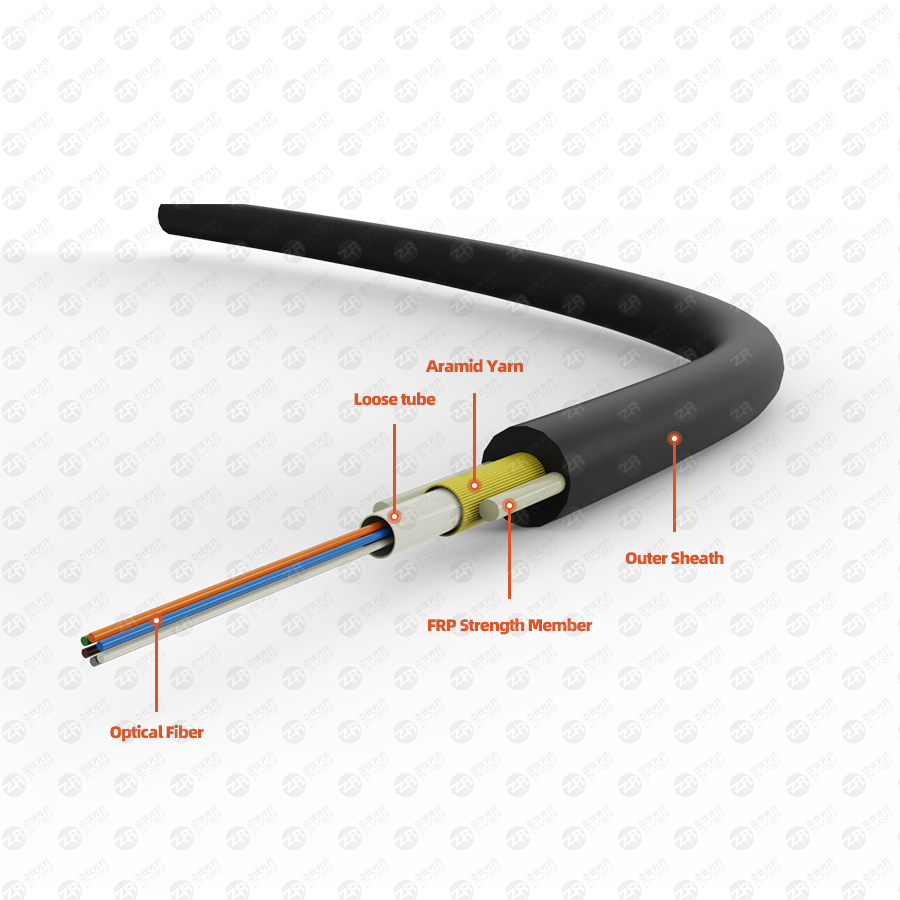- Sales SupportContact Sales
- Call us at: +(86) 15211074652
- Send us a email at: info@zr-fibercable.com
What are the characteristics of single mode fiber?
Single-mode fiber has small intermodal dispersion and is suitable for long-distance communication, but there are also material dispersion and waveguide dispersion, so single-mode fiber has higher requirements on the spectral width and stability of the light source, that is, the spectral width should be narrow and stable. Sex is better.
Single-mode fiber (SingleModeFiber): The central glass core is very thin (the core diameter is generally 9 or 10μm), and only one mode of fiber can be transmitted.
Single-mode fiber has small intermodal dispersion and is suitable for long-distance communication, but there are also material dispersion and waveguide dispersion, so single-mode fiber has higher requirements on the spectral width and stability of the light source, that is, the spectral width should be narrow and stable. Sex is better.
Later, it was found that at the wavelength of 1.31 μm, the material dispersion and the waveguide dispersion of the single-mode fiber are positive and negative, and the magnitudes are exactly the same. In this way, the 1.31μm wavelength region has become an ideal working window for optical fiber communication, and it is also the main working band of the practical optical fiber communication system. It is determined in the proposal, so this fiber is also called G652 fiber.
Compared with multi-mode fiber, single-mode fiber can support longer transmission distance. From 100Mbps Ethernet to 1G Gigabit network, single-mode fiber can support more than 5000m transmission distance.

From a cost point of view, since the optical transceiver is very expensive, the cost of using a single-mode fiber is higher than that of a multi-mode fiber optic cable.
The refractive index distribution is similar to that of the abrupt fiber, the diameter of the core is only 8-10 μm, and the light propagates along the central axis of the core in a linear shape. Because this fiber can only transmit one mode (the two polarization states are degenerate), it is called a single-mode fiber, and its signal distortion is small.
The explanation of "single-mode fiber" in academic literature: Generally, when v is less than 2.405, only one wave peak passes through the fiber, so it is called a single-mode fiber. Its core is very thin, about 8-10 microns, and the mode Dispersion is small. The main factor affecting the width of the optical fiber transmission bandwidth is various dispersion, and the modal dispersion is the most important. The dispersion of the single-mode fiber is small, so it can transmit light over a long distance with a wide frequency band.
The single-mode fiber has a core diameter of 10 micron, which allows single-mode beam transmission, which can reduce the limitations of bandwidth and modal dispersion. However, because the core diameter of single-mode fiber is too small, it is difficult to control beam transmission. An extremely expensive laser is required as the light source body, and the main limitation of single-mode fiber optic cable is material dispersion. Single-mode fiber optic cables mainly use lasers to obtain high bandwidth. Since LEDs emit a large number of light sources with different bandwidths, material dispersion requires Very important.
Compared with multi-mode fiber, single-mode fiber can support longer transmission distance. From 100Mbps Ethernet to 1G Gigabit network, single-mode fiber can support more than 5000m transmission distance.
From the perspective of cost, since the optical transceiver is very expensive, the cost of using single-mode optical fiber will be higher than that of multi-mode optical fiber cable.
Single Mode Fiber (SMF)
Compared with multimode fiber, single-mode fiber has a much smaller core diameter, only 8-10 μm. Because only one mode is transmitted, there is no inter-modal dispersion, the total dispersion is small, and the bandwidth is wide. Single-mode fibers are used in the wavelength region of 1.3 to 1.6 μm. By properly designing the refractive index distribution of the fiber and selecting high-purity materials to prepare a cladding that is 7 times larger than the core, it can be achieved at the same time in this wavelength band. Lowest loss and smallest dispersion.
Single-mode fiber is used in long-distance, high-capacity fiber-optic communication systems, fiber-optic local area networks, and various fiber-optic sensors.
ZR Cable focuses on the research and development and sales of optical fiber communication products. Optical communication products include standard product optical cables, optical fiber jumpers Cables, mpo/mtp data centers, optical fiber distribution frames, etc., at ZR Cable you can buy all optical communication products in one stop.
You might be interested in
We use cookies to ensure that we give you the best experience on our website. By clicking on "Accept" or continuing to use this site, you agree to our use of cookies in accordance with our Cookie Policy .You can refuse the use of cookies here.
Accept

